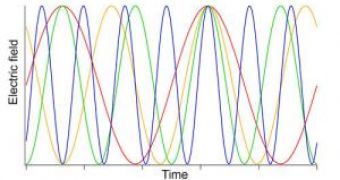NIST, the National Institute of Standards and Technology, in the US, has presented a prototype network that is the first capable of remote synchronization of light waves from two "frequency combs"-advanced laboratory tools for precisely measuring frequencies of light.
It's a flexible network design that can be tuned across a range of light frequencies, from visible to near-infrared and it can greatly simplify precise comparisons of the latest atomic clocks that operate in different locations at different frequencies.
The two frequency combs have small teeth-like marks that tag precise frequencies in different but overlapping bands. Two light waves of different frequencies can either exactly overlap or be out of phase, when they are merged.
It takes a lot of effort to make them overlap out of phase, but this is exactly what the new fiber-optic network was designed to do. This reduces the channel noise that usually comes from mismatches and preserves the original signal character using the low "jitter" of the synchronized waves and the stability of the lasers.
The new network also demonstrated a record performance in a frequency comb coming form a laser using erbium fiber, better than that of a titanium-sapphire crystal and the main advantages of these new applications are the fact they can be made more compact and less expensive, thus allowing them to measure the lower, near-infrared frequencies of light that are used in telecommunications.
For the moment, the network is in the prototype stage, spanning three-quarters of a kilometer and connecting three labs of the NIST campus in Boulder, Colorado. Researchers hope that it will be extended to more than 50 kilometers and still without any performance losses.
Other possible applications in the near future could be in remote sensing and secure communications, due to its increased speed and reliability.

 14 DAY TRIAL //
14 DAY TRIAL //